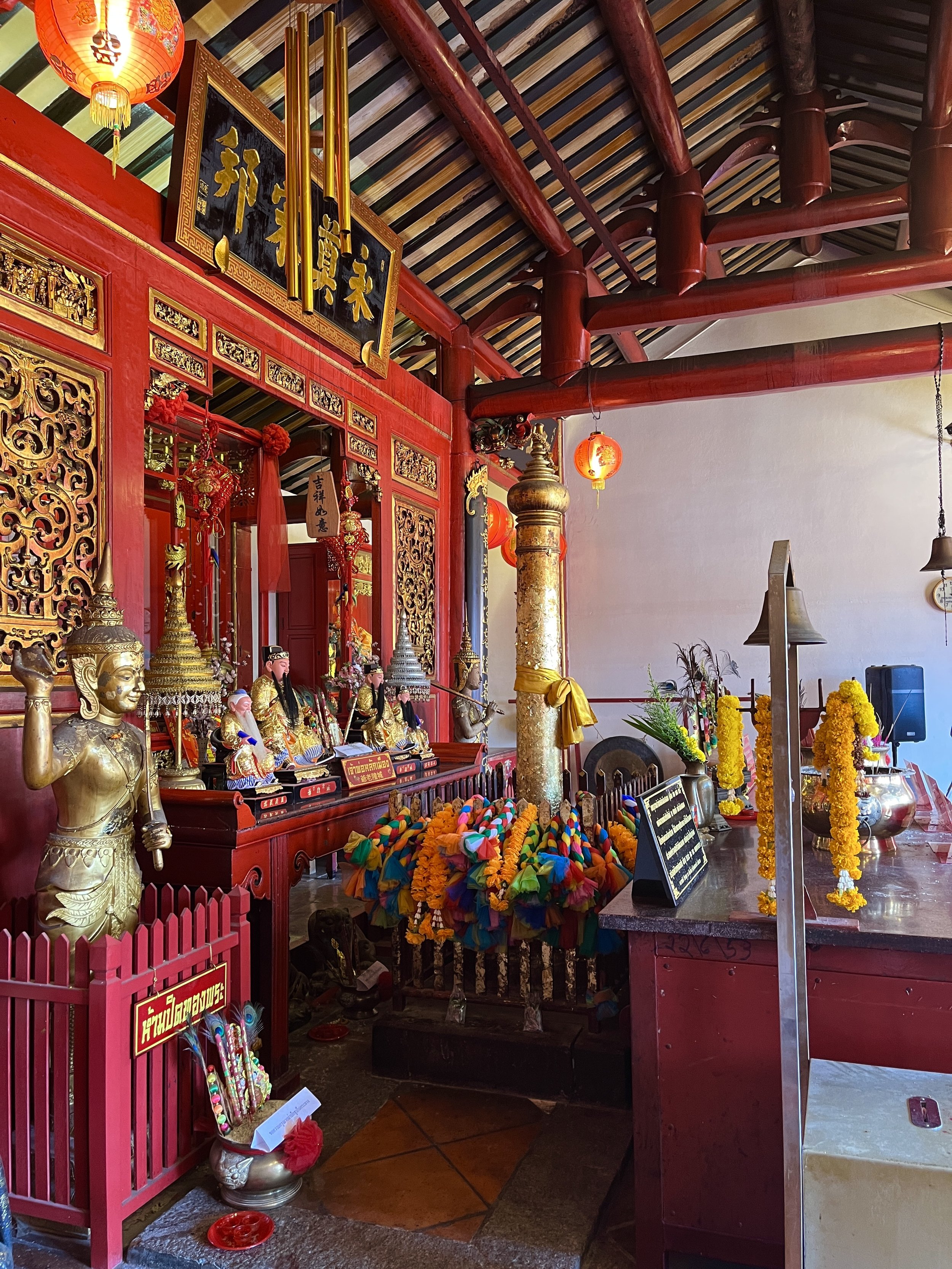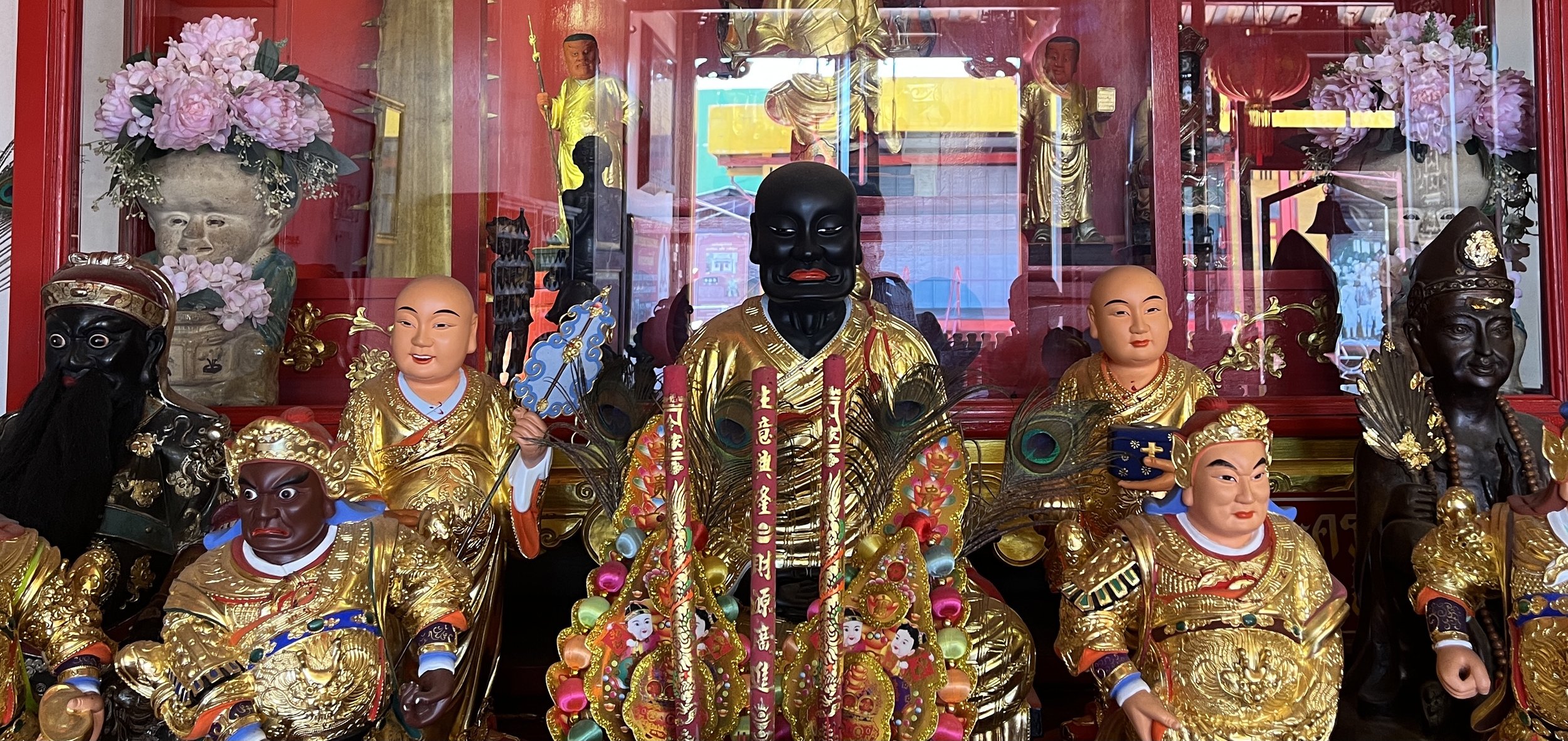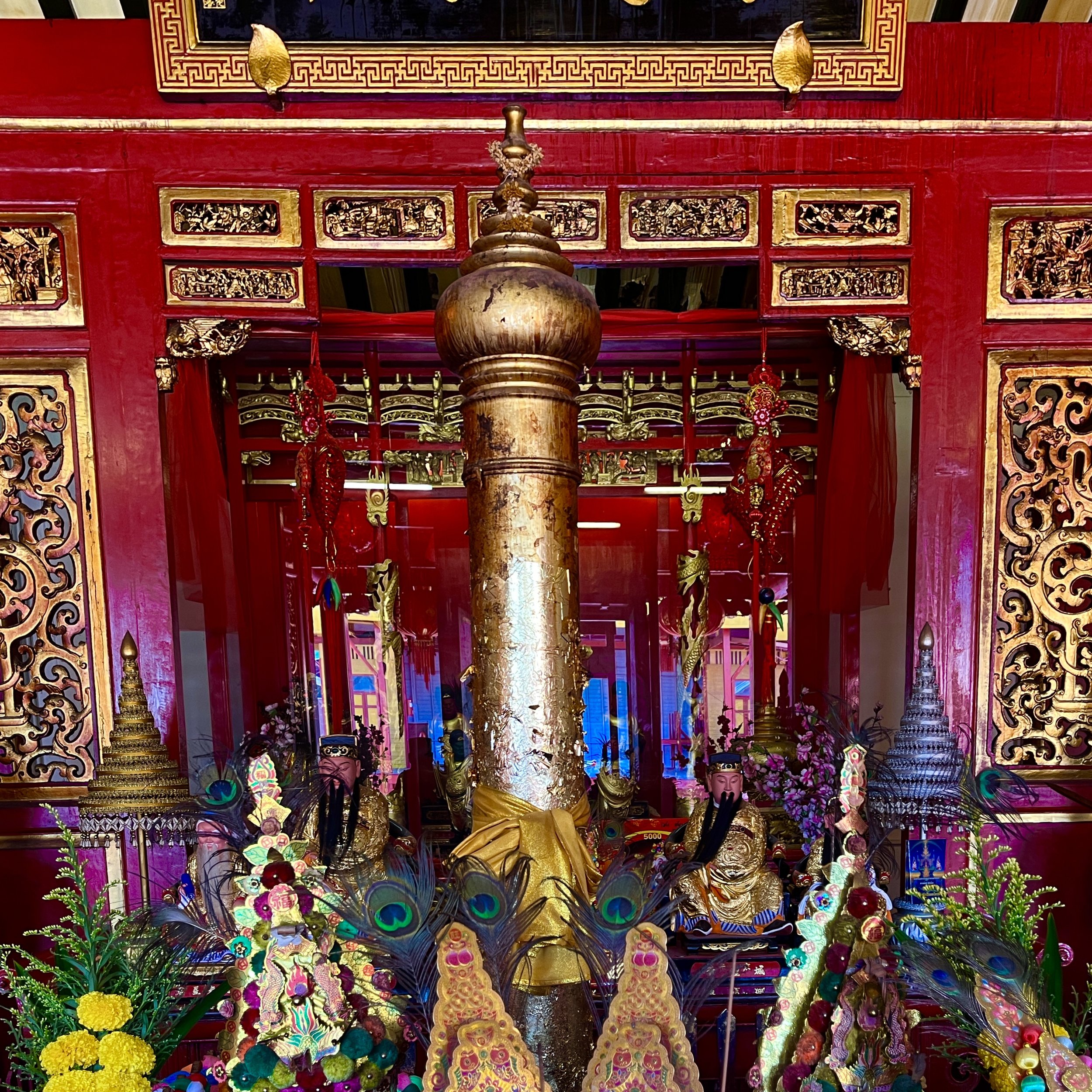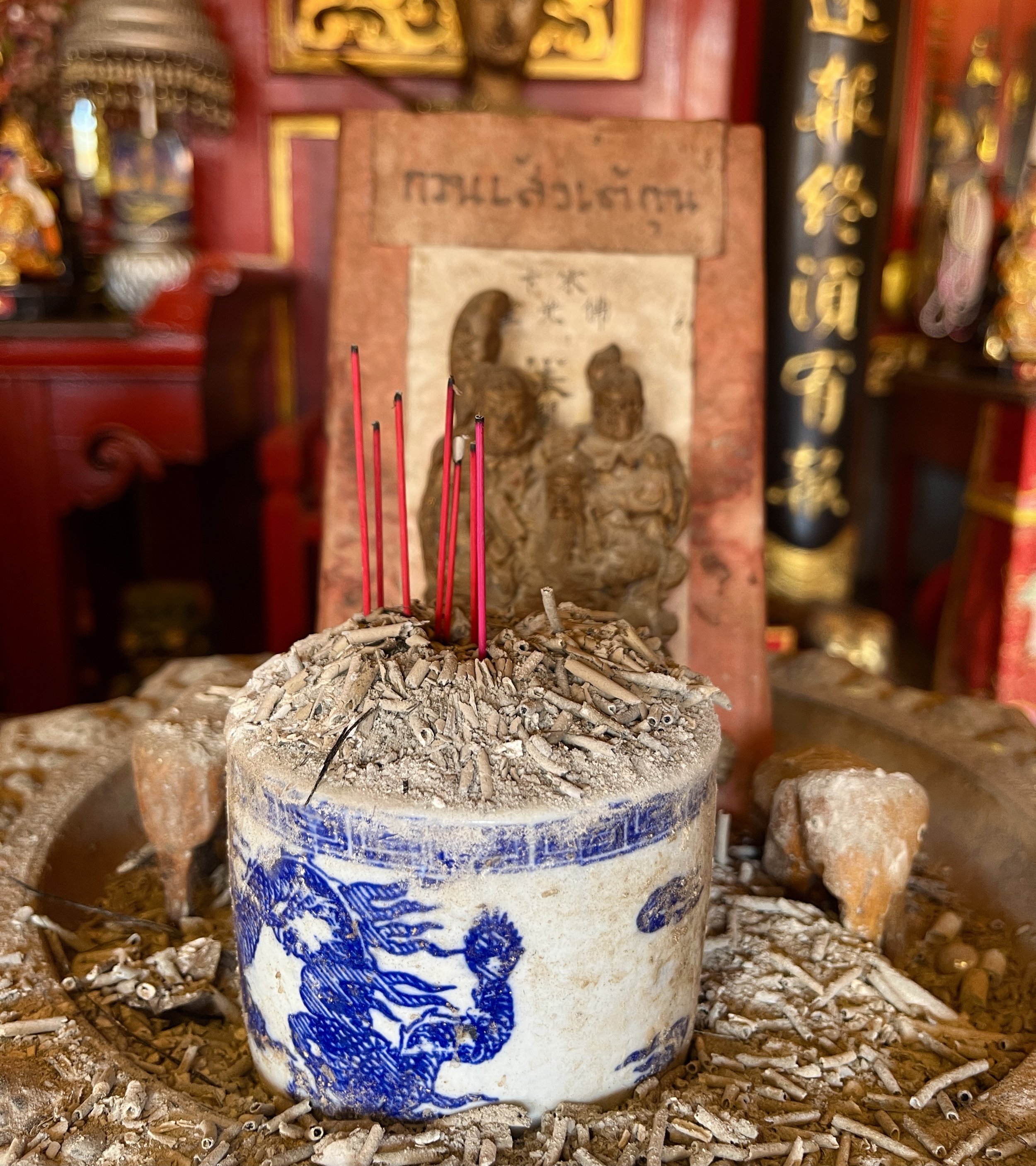The Songkhla City Shrine was built in 1842, during the lifetime of the founder of Songkhla's hereditary ruling family, Phraya Vichian Siri (Tianseng Na Songkhla). Inside, there once was a city pillar made from Javanese cassia wood. Unlike most Thai city pillars, which are large stone or brick and plaster monuments, this city pillar, though no longer wooden, is still small and kept indoors. The first city pillar was given by the Thai King Nangklao in 1842, along with offerings given as alms to Phraya Songkhla (Tianseng) to establish the shrine.
At that time, the king also selected Phra Udom Pidok as the leader of Buddhist ceremony and Phra Kru Assasachan Phram as the leader of Hindu ceremony, and each was accompanied by eight worshippers in their faith. Phraya Songkhla (Tianseng) built four ceremony halls facing each cardinal direction, and arranged a large parade of Thai and Chinese Buddhists to carry the pillar and the candle to the new shrine.
At the sacred time (as determined by astrologers), the 10th day of waxing moon in the 4th month, in the year of tiger, 1204th year of Thai minor era at 7.10 a.m. (or 10 March 1842), the Buddhist procession met the awaiting Phraya Songkhla (Tianseng), along with Phra Khru Assadachan and the Hindu priests, who placed the pillar at the center of Songkhla town. After the pillar was erected, a party was held for 5 days and 5 nights. Phraya Songkhla (Tianseng) endowed the temple with 22 monks he personally supported.
At the time, the temple complex included a Khon performing hall, a puppet performing hall, a Chinese opera performing hall, and 4 Norah performing halls. Later, Phraya Songkhla also built 3 Chinese-style buildings to cover the pillar and a shrine of Chao Sua Muang.
In 1917, in the era of King Vajiravudh, Prince Yugala Dighambara, the viceroy of southern region, published an announcement that the pillar was rotten by termites. Local people and merchants in Songkhla raised funds to rebuild the pillar out of cement, and consecrated it on 1 March 1917, the 7th day of the waning moon in the 4th month, 22 minutes and 36 seconds before noon. Four astrologers stood at each cardinal direction began by placing soil from the far reaches of the province into the foundation, and workers were done erecting the pillar by 8.41.36 that evening.
Today, the Chinese opera hall is still in use but the others have been turned into school buildings. The temple is at the north end of the main Chinatown strip, so not a bad place to start exploring old town Songkhla (which should only take a day or two max).











